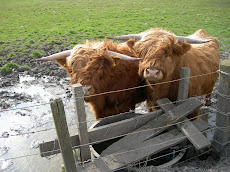In Ayshire, there are many towns which bear the prefix "Kil." This prefix has been translated from the Celtic as meaning "Cell" or "Church", so Kilmarnock according to local tradition means the Church of St. Marnock.The first settlements in this area more than likely were due to the expansion of Christianity, somewhere around 397 AD after St. Ninian established a church on the Solway coast in Whithorn. However remain like the Dragon Stone indicate that there were prehistoric people living in East Ayrshire.
East Ayrshire abounds with castles and towers which date as far back as the 13th, 14th and 16th Century. This was when Scottish Barons were enjoying the height of their power and intimately involved in national affairs. One period in particular stood out when Edward I (known as Edward Longshanks) was making his advances on Scottish territory. This was at the time of William Wallace, who had much connection with the area. The Wallace family castle stands at Riccarton which is now a part of Kilmarnock. He is well know for his ambush of the English in 1297 at Loudoun Hill. We also know that Robert the Bruce, or Robert I was active in this area and won a battle also at Loudoun Hill, against Edward I in 1307.
Today this area is no longer at conflict and it is one of the most beautiful of the many exquisite Scottish places to visit. It is also the home of many famous Scotsment, including Johniie Walker of the whiskey fame. And a statue in tribute to him stands near Laigh Kirk. Andrew Fisher who was a miner at Crosshouse, became the Prime Minister of Australia and Sir Alexander Fleming, who discovered penicillin was born near Darvel, receiving his basic education at Kilmarnock Academy.
Dean Castle Country Park makes for an excellent free day out for the family. It covers 200 acres of glorious woodland walks, a pets corner, tearoom, play-park and 14th century castle which displays historic relics such as armor, weapons and musical instruments. The original keep of the castle dates back to 1350, and has very strong connections with events and people in Scottish history.
For a wide selection of Kilmarnock hotels just click here.
Article Source: http://EzineArticles.com/?expert=Simon_Haughtone
Subscribe to:
Post Comments (Atom)











No comments:
Post a Comment